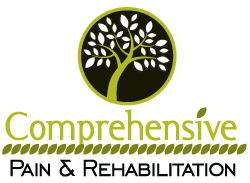Platelet-Rich Plasma (PRP) Injection Therapy
HELPING YOURSELF HEAL: Understanding How Your Body’s Natural Growth Factors May Help Optimize the Conditions for Healing
Comprehensive Pain & Rehabilitation (CPR) provides this advanced cellular therapy service that is shown to optimize conditions for healing of painful joints through a repair and regeneration process.
PRP is offered at all of our locations, including the Pascagoula MS and Fairhope AL. Call 251.625.2228 or 228.938.0700 to schedule your initial consultation today.
Click on the headings below to learn more about Platelet-Rich Plasma (PRP)
What is PRP?
Platelet Rich Plasma (PRP) is a concentrated sample of your own blood composed primarily of high-levels of platelets. Platelets are a critical component of the wound healing process. Importantly, platelets contain growth factors that are responsible for stimulating tissue generation and repair.
The Harvest PRP therapy, provided by Comprehensive Pain & Rehabilitation, delivers a concentration of platelets and growth factors that is approximately 4-6 times greater than that found in whole blood. These concentrated platelets contain huge reservoirs of growth factors – natural components of your body. Clinical data has shown that growth factors may enhance and accelerate your body’s normal healing process.
Potential benefits of PRP include:
- reduced bleeding
- diminished pain levels,
- reduced infection rates,
- enhanced wound closure,
- accelerated tissue regeneration, and
- reduction of overall healing times.
The use of PRP is a safe clinically accepted procedure now readily accessible to all patients of Comprehensive Pain & Rehabilitation identified as appropriate for this intervention.
What are Growth Factors?
Growth factors are necessary to initiate tissue repair and regeneration at the wound site. Growth factors derived from platelets are responsible for:
- soft tissue repair,
- bone regeneration,
- development of new blood vessels, and
- stimulation of the wound healing process.
The highly concentrated level of growth factors found in the Harvest PRP may optimize conditions for healing.
How Could PRP Be Used for My Treatment?
The use of PRP varies from patient to patient – depending on the treatment needed. PRP is generally applied to the wound site to accelerate tissue regeneration, therefore healing. Clinical studies have shown that application of PRP can help reduce bleeding, minimize pain, reduce infection rates, and optimize overall healing.
Am I a Candidate for PRP?
Prime candidates for this non-surgical procedure are individuals who pursue an active lifestyle and participate in sports-related activities (they tend to have an increased likelihood of experiencing injuries or chronic pain in the tendons) or are experiencing osteoarthritis.
This procedure involves the drawing out of rich platelets using the patient’s own blood to help repair cartilage or tendon that may have been damaged. PRP has shown success in relief of pain while expediting the healing process.
What is Involved with this Procedure?
This simple procedure typically doesn’t take more than an hour and is performed in the CPR offices in Pascagoula, MS and Fairhope, AL.
- The clinician draws a small volume of your blood at the time of treatment.
- Following the drawing of the platelets, they are then placed in a specialized centrifuge that spins and automatically separates the red blood cells from the plasma.
- The plasma is then further centrifuged to concentrate the autologous platelets and hence the natural growth factors.
This process takes approximately 15 minutes to complete. Then, with the assistance of an ultrasound machine, the rich platelets are injected into the tendon or cartilage that has been damaged.
PRP injection therapy treatment may vary on a case-by-case basis. Some patients may require only one injection while others may require more. That frequency is determined by utilizing an MRI or an Ultrasound.
Once the procedure is completed, patients are advised to rest, and to follow that rest period with physical therapy. Patients are then re-examined during a follow-up appointment to determine the level of improvement that has occurred. Generally, after about 3 months pass, patients can return to engaging in sports-related and other athletic-based activities.
